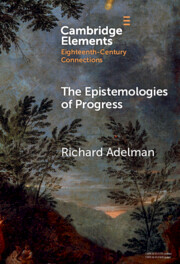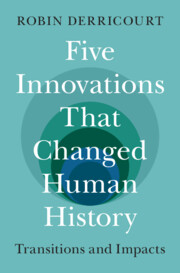Refine search
Actions for selected content:
118 results
12 - Conclusion
-
- Book:
- Property Law in China
- Published online:
- 09 July 2025
- Print publication:
- 24 July 2025, pp 347-354
-
- Chapter
- Export citation
Decoding the palliative care landscape in Nigeria: Progress, challenges, and the road ahead
-
- Journal:
- Palliative & Supportive Care / Volume 23 / 2025
- Published online by Cambridge University Press:
- 25 June 2025, e123
-
- Article
-
- You have access
- Open access
- HTML
- Export citation
13 - God’s Grace and Our Willing in Augustine’s Preaching
- from Part III - Augustine’s Preaching Themes
-
-
- Book:
- The Cambridge Companion to Augustine's Sermons
- Published online:
- 26 May 2025
- Print publication:
- 12 June 2025, pp 245-262
-
- Chapter
- Export citation
2 - Social Medicine in the Arab World
-
-
- Book:
- Medicine on a Larger Scale
- Published online:
- 05 May 2025
- Print publication:
- 22 May 2025, pp 40-59
-
- Chapter
-
- You have access
- Open access
- HTML
- Export citation
Critical Theory Needs Decolonization and Neo-Vedanta May Hold the Key
- Part of
-
- Journal:
- Public Humanities / Volume 1 / 2025
- Published online by Cambridge University Press:
- 02 May 2025, e94
-
- Article
-
- You have access
- Open access
- HTML
- Export citation

The Epistemologies of Progress
-
- Published online:
- 28 April 2025
- Print publication:
- 29 May 2025
-
- Element
- Export citation
Outlook
-
- Book:
- The Prohibition of Torture and Ill-Treatment under International Law
- Published online:
- 17 April 2025
- Print publication:
- 24 April 2025, pp 383-384
-
- Chapter
- Export citation
Chapter 1 - Erasmus Darwin and the Mechanics of Speech
-
- Book:
- British Romanticism and the Matter of Voice
- Published online:
- 16 January 2025
- Print publication:
- 23 January 2025, pp 17-62
-
- Chapter
- Export citation
2 - Empire Apart, Empire Together
-
- Book:
- Geographies of Gender
- Published online:
- 09 January 2025
- Print publication:
- 23 January 2025, pp 77-114
-
- Chapter
- Export citation
Breadth versus depth of knowledge: the need for new model trematode species
- Part of
-
- Journal:
- Journal of Helminthology / Volume 99 / 2025
- Published online by Cambridge University Press:
- 20 January 2025, e7
-
- Article
-
- You have access
- Open access
- HTML
- Export citation
‘A little knowledge is a dangerous thing’: Rural realities, professional ideals, and the forgotten history of cottage nursing c. 1880–1939
-
- Journal:
- Rural History / Volume 36 / Issue 1 / April 2025
- Published online by Cambridge University Press:
- 09 January 2025, pp. 172-192
-
- Article
-
- You have access
- Open access
- HTML
- Export citation
6 - The European Mythology of the Indies
-
- Book:
- Fallen From Heaven
- Published online:
- 12 December 2024
- Print publication:
- 19 December 2024, pp 225-244
-
- Chapter
- Export citation
Chapter 7 - G. K. Chesterton
- from Part II - 1900–1945
-
-
- Book:
- The British Novel of Ideas
- Published online:
- 05 December 2024
- Print publication:
- 12 December 2024, pp 134-149
-
- Chapter
- Export citation
Epilogue: Multiple Definitions of Progress and Development
-
- Book:
- Relocating Development Economics
- Published online:
- 05 December 2024
- Print publication:
- 12 December 2024, pp 151-160
-
- Chapter
- Export citation
1 - Introduction: Relocating Development Economics
-
- Book:
- Relocating Development Economics
- Published online:
- 05 December 2024
- Print publication:
- 12 December 2024, pp 1-18
-
- Chapter
- Export citation
Chapter 7 - Innovation, Progress and Presentism
-
- Book:
- Five Innovations That Changed Human History
- Published online:
- 01 November 2024
- Print publication:
- 21 November 2024, pp 235-250
-
- Chapter
- Export citation
Chapter Seven - Persistent Ambivalence
-
- Book:
- Law and Jewish Difference
- Published online:
- 14 November 2024
- Print publication:
- 21 November 2024, pp 218-238
-
- Chapter
- Export citation

Five Innovations That Changed Human History
- Transitions and Impacts
-
- Published online:
- 01 November 2024
- Print publication:
- 21 November 2024
Chapter 10 - Aristotelian Teleology in Literary Criticism
- from Part III - Narratives of Change
-
-
- Book:
- Writing Literary History in the Greek and Roman World
- Published online:
- 07 June 2024
- Print publication:
- 27 June 2024, pp 213-236
-
- Chapter
- Export citation
